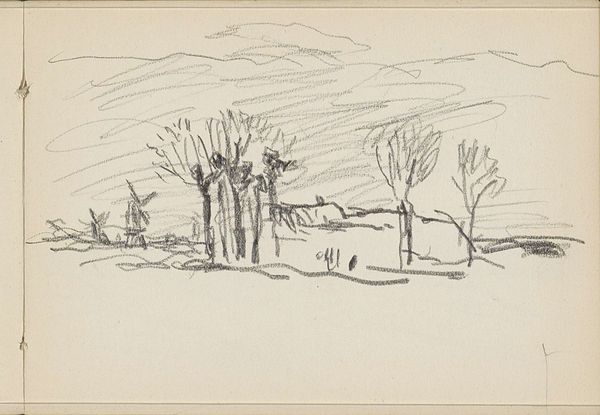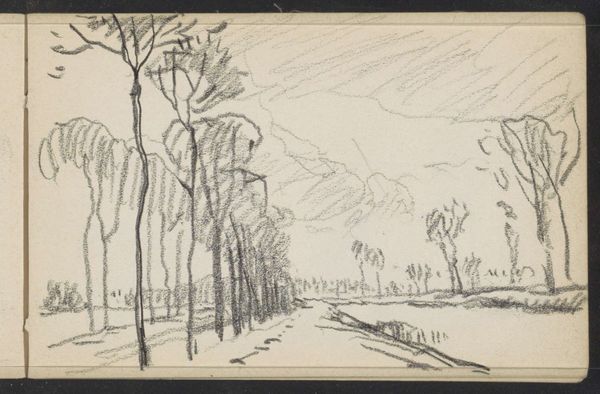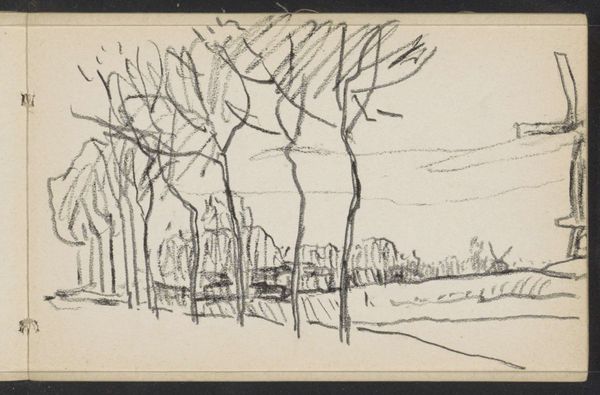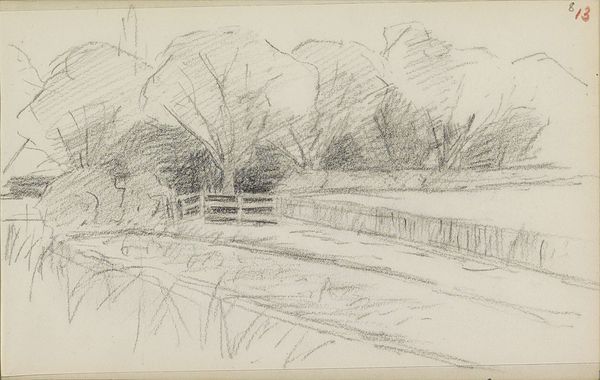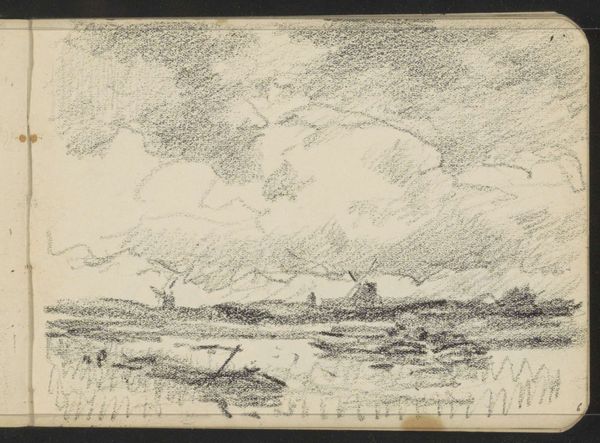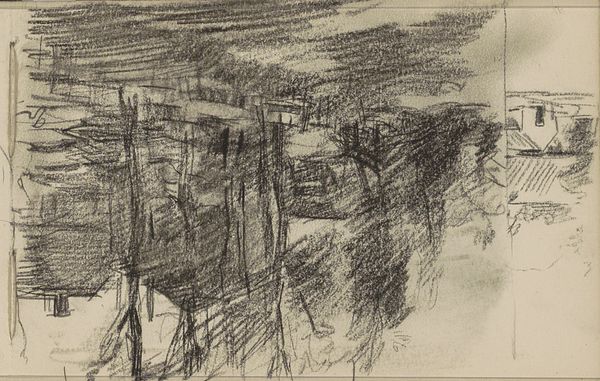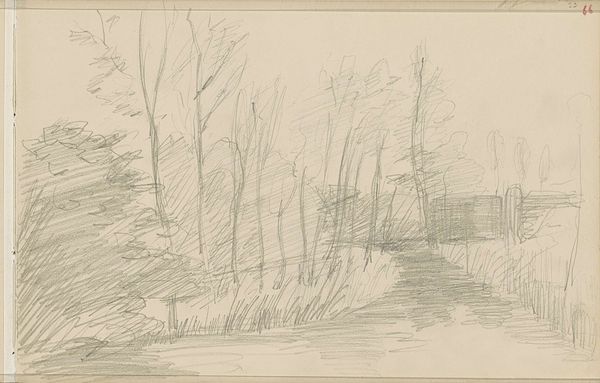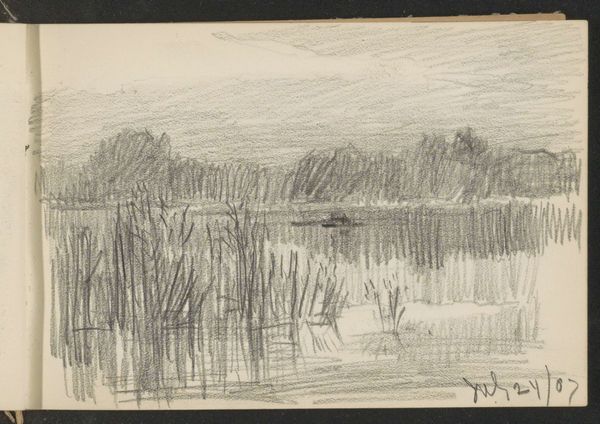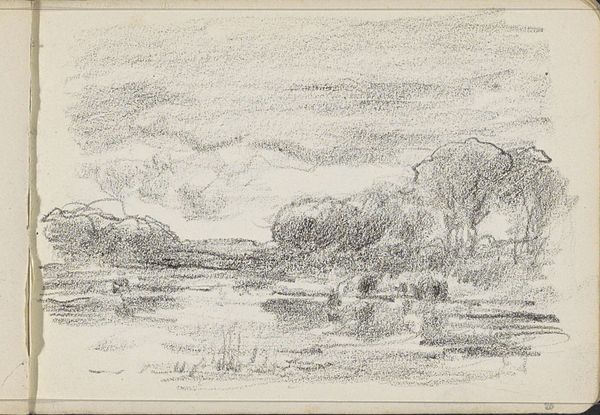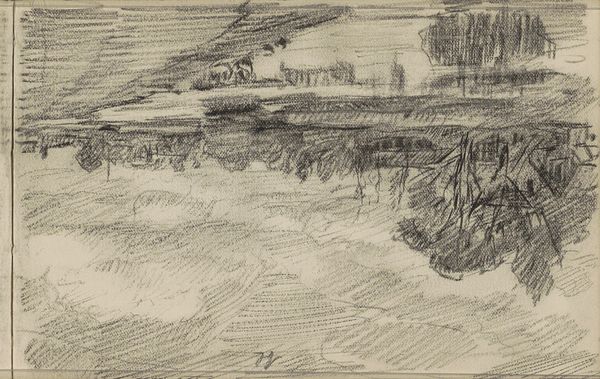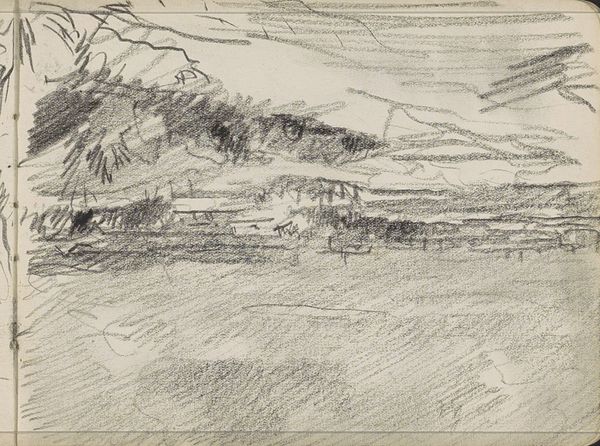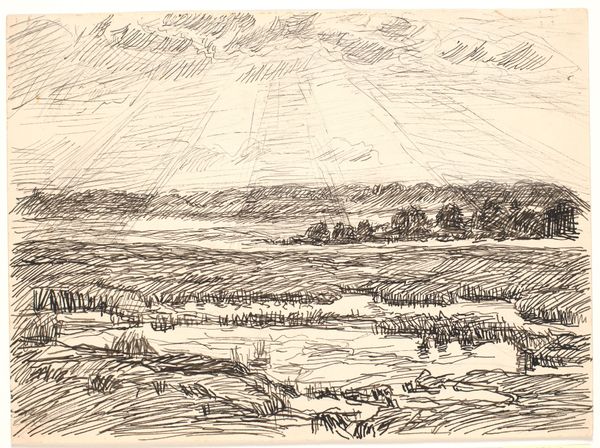
drawing, pencil
#
tree
#
drawing
#
ink drawing
#
pen sketch
#
landscape
#
personal sketchbook
#
sketchwork
#
ink drawing experimentation
#
sketch
#
pen-ink sketch
#
pencil
#
pen work
#
sketchbook drawing
#
sketchbook art
#
realism
#
initial sketch
Copyright: Rijks Museum: Open Domain
Editor: So, we're looking at "Landschap met bomen en een molen" – "Landscape with Trees and a Mill," possibly from 1908, by Alexander Shilling. It looks like a quick sketch, maybe pencil or ink, with a moody, overcast sky. What do you see in this piece that stands out in terms of its historical context? Curator: Well, first it's crucial to consider the sketch's seeming lack of purpose. What I mean by that is that at the beginning of the 20th century, rapid urbanization transformed the cultural landscape and pushed back on established art traditions. These kinds of preliminary studies reflect an interest in the fleeting, the immediate, like a snapshot of the natural world but this is made distinct due to it being drawn manually and then transferred via media attention through publications. How does the sketch reflect this shift? Editor: I see it in the rough, unfinished quality. It’s not a grand, idealized landscape; it feels more personal and immediate. Did Shilling use it as a preliminary painting practice? Curator: Precisely! The image operates at two scales -- it is evidence of the artist in the present (through publication). The sketch, although it would be considered less serious in its intent as compared to a finished landscape painting, holds incredible insight to artistic style, method and decision-making capabilities of its creator. Also, think about the accessibility a drawing would afford over a larger finished artwork -- did it change the viewing context? Editor: So, its historical value lies in its candid view and wider range of access. Something between the intimate art-making and then being offered through publishing efforts? It allows us to witness Shilling's process and artistic exploration? Curator: Exactly! These "unofficial" images contributed to how we saw art in social and personal experiences through the commodification of an artist's labour. Editor: That makes a lot of sense. I’ve definitely learned to appreciate the story behind sketches more, especially considering the broader shift in the understanding of art and visual imagery during the time.
Comments
No comments
Be the first to comment and join the conversation on the ultimate creative platform.
